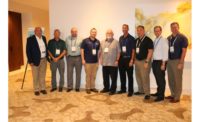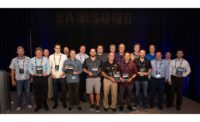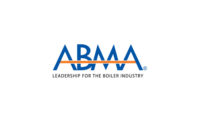MARCO ISLAND, Fla. — It’s not about installing a better box, it’s about thinking outside the box and designing for opportunity. It’s about operating on all cylinders, advancing the industry, and driving the entire customer journey from start to finish and beyond.
To achieve these goals, we all have to “Level Up.”
That was the message bestowed upon more than 1,300 attendees of Daikin’s 2019 Group Sales Meeting, held Oct. 4-8 in Marco Island, Florida.
The “Level Up” themed event showcased Daikin’s latest technological innovations on an expo floor, where product managers provided hands-on demonstrations of the company’s latest building management innovations and shared operational best practices with customers from all over the world.
“Daikin is fully invested — we’re all in when it comes to leading and driving this industry to an entirely new level,” said Mike Schwartz, CEO, Daikin Applied Americas. “We're levelling up our technology, product offerings, infrastructure, and manufacturing automation. Now, we know we can't do this alone. Epic wins require expert players, and great solutions are nothing without great partners. Daikin is fully vested not just in the buildings of the future but in building a better future. We have the passion, drive, and expertise to raise the industry's game, and I'd like to invite you all along on this journey.”
State of the Company
Daikin’s North American footprint has become an increasingly important part of Daikin Global’s international growth. Schwartz explored this notion during his opening keynote presentation.
“This year, Daikin will approach $24 billion in global revenue,” he said. “U.S. operations will account for approximately 30% of those revenues. If you go back 10 years, that percentage was closer to 5%. We’ve experienced a dramatic growth in our Americas business.”
Schwartz attributes this growth to continuous investments in technology, factory automation, product development, engineering, people, environmental sustainability, and more.
To continue to meet the needs of the market, Schwartz declared the company will continue to evolve.
“Our mission today, and going forward, is really to change who we are and to challenge ourselves,” he said. “For almost 90 years, we’ve been a traditional HVAC hardware provider. Now, as we look forward to the industry and the changes that are going on, it’s clear that we’ve got to become a much broader HVAC solutions provider that goes beyond just the equipment.”
This transition will be optimized by leveraging IoT platforms, artificial intelligence, and big data from the cloud throughout their operations and facilities.
“Harnessing this data allows us to analyze not only the performance of our products but the health of the buildings that house them,” Schwartz said. “This information leads us to interesting information regarding service capabilities and analytical data on default diagnostics, which, ultimately, allows us to make buildings smarter, more productive, and more energy efficient at the same time.”
Daikin is using its new automation abilities as a way to mix in customer feedback, which helps the manufacturer stay ahead of industry trends and the competition.
“We're taking quality and warranty data directly from our suppliers and feeding it into the assembly lines,” Schwartz said. “We're now using artificial intelligence to help us look at different indicators so that we can hopefully get ahead of the trends we see regarding our manufacturing activities. We can then correlate that to the number of orders we have coming through in the next 60, 90, and 120 days. This will allow us to get more predictive as to when we need to be ramping up or down and be more responsive to short lead times and backlogs.”
A Full Solutions Provider
Moving from an equipment manufacturer to a solutions provider was a chief priority of the 2019 sales meeting.
Kirk Thorne, executive vice president of sales, marketing, and aftermarket at Daikin Applied, echoed this sentiment, stating that Daikin, and its partners, need to continue rapidly moving from equipment-only businesses to solutions-based businesses.
“Probably 30% of our reps are still focused on equipment only, be it replacement or new construction,” he said. “And there's probably an equal number or a few more that also provide the full-bundled solution with controls and other third-party products. And that's exactly the way we see it headed. As a one-stop shop, you have to be able to provide the full solution to end users and contractors. There are a lot of mechanical contractors out there still wanting to break this and that out, but that’s not how to win. I think the more you can present a bundled solution and have it meet the competitive landscape, the better off you are.”
To help its customers accomplish this, Thorne said Daikin is preparing to release a new nonproprietary, open protocol wireless control system.
“This will be a completely new platform compatible with IE [Intelligent Equipment®] and IS [Intelligent Systems®]”, he said. “With an open protocol, users will have connectivity to all of the points of the equipment and the system. Customers are frustrated by proprietary contracts and languages, and it’s our aim to help alleviate that frustration.”
Thorne said Daikin is keeping a close eye on the refrigerant landscape and how the building codes will evolve in their shadow.
“Back in 2006, we endured the National Appliance Energy Conservation Act, which initiated a big change for the industry,” he said. “Now, within the low-GWP realm, we're looking at replacements for R-410A. Daikin believes R-32 is the best path
“As this change occurs, the question remains, how will the building codes and standards come together by January 2023?” Thorne continued. “We have a significant meeting with AHRI’s leadership team coming up in November, and one of the key things that I want to really get a better understanding of is: What's the path to getting the building codes in place and accepted for an A2L? Additionally, what's the reaction of some of the local municipal fire departments, like the FDNY? How's the fire department in New York going to accept A2Ls? That’ll all be very interesting.”
Two additional intangibles impacting Daikin’s North American future include the American economy and the political climate.
“Those are two issues that are out of our control,” Thorne said. “We’re leaning on utilizing artificial intelligence, automation in the factories, smarter solutions, and doing things that help us get more efficient and much smarter. We’ll continue to focus on the things we control as well as improve our responsiveness to the market.”







